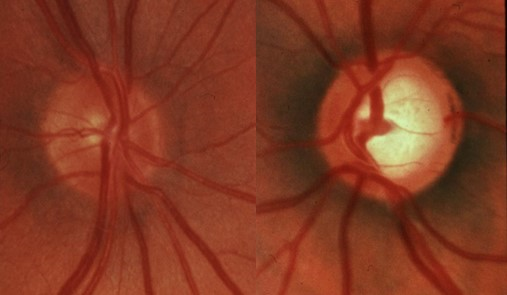Glaucoma
There are many different types of glaucoma but they all share one common feature, namely there is characteristic, progressive damage to the optic nerve.

The condition affects 2% of those aged over 40 years, increasing to 4-5% in the over-80s. It is the second most common cause of irreversible blindness in the UK, accounting for approximately 10% of blind registrations.
If left untreated glaucoma can lead to tunnel vision and blindness, but most people who go blind from glaucoma are those who are diagnosed at a late stage. As a result, it is important to detect it early.
How is it diagnosed?
In the early stages, glaucoma does not cause any symptoms, so the best way to detect it is through regular eye tests with your optometrist.
Your optometrist is trained to look for findings that suggest glaucoma. Your optometrist will therefore check for:
- Raised Intra Ocular Pressure or IOP which is associated with glaucoma
- Signs of glaucomatous damage to the optic nerve
- A loss of visual field in either one/both of your eyes
You are more at risk of glaucoma as you get older (> 40 years); are very short-sighted; of African or Caribbean origin; have an immediate family member with glaucoma; have raised pressure inside your eye.
What are the treatments?
If your optometrist suspects you may have changes indictive of glaucoma you will be referred to an ophthalmologist (eye doctor); test findings will be considered collectively before a diagnosis of glaucoma is made. There is no cure for chronic glaucoma but it can be treated effectively with eye drops, laser procedure or surgery.
Useful websites
- Glaucoma UK
https://www.glaucoma.uk/ - Moorfields Eye Hospital: Glaucoma
https://www.moorfields.nhs.uk/service/glaucoma